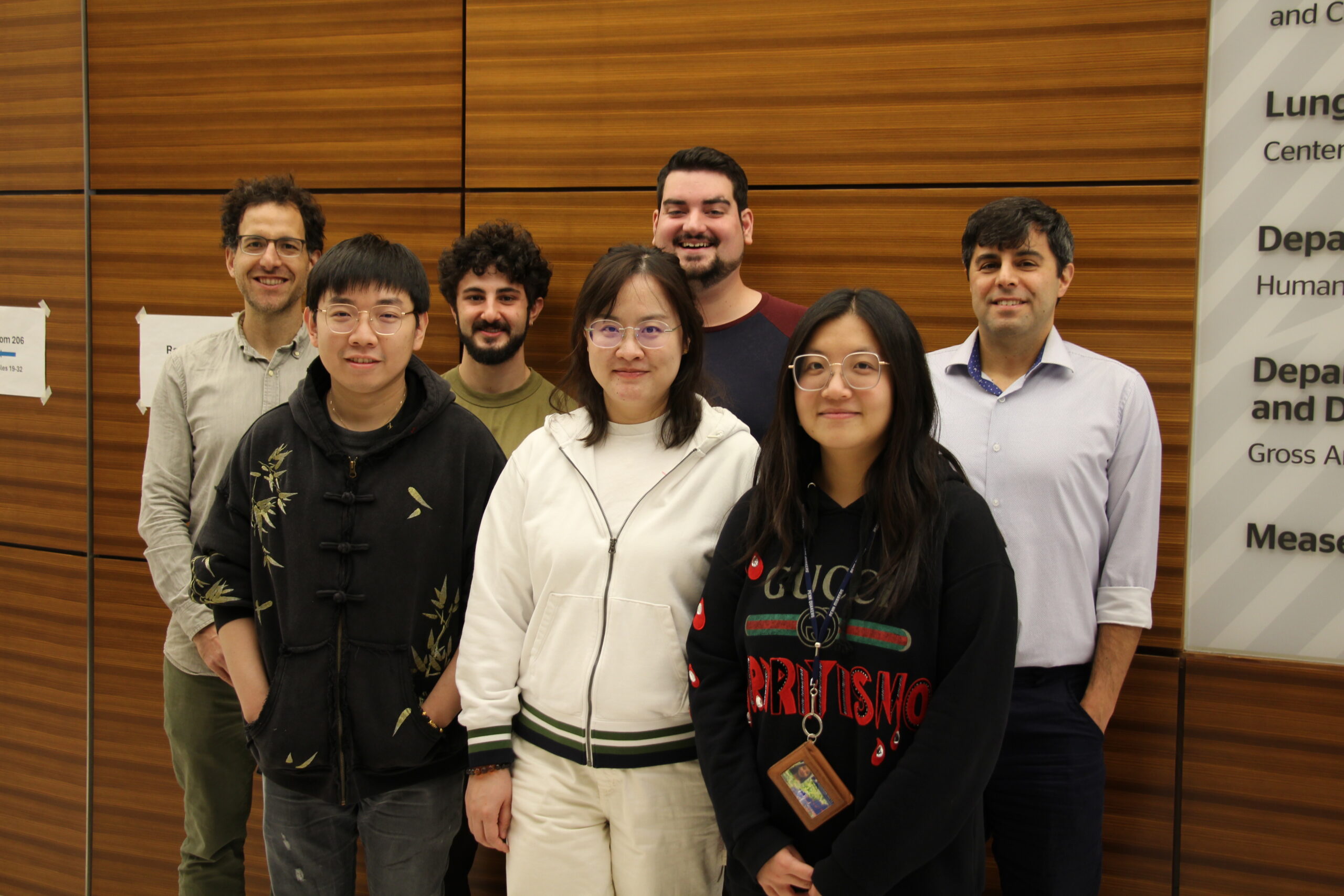
Imagine a new drug class that could — with one intramuscular injection at home or in a doctor’s office — treat the most common, chronic diseases such as diabetes, Alzheimer’s and many types of cancer, and it would be so effective that you’d only need to administer it every six months at the most. Some of the foundational research needed to develop this drug class has already been done using lipid nanoparticles (LNPs) and their ability to successfully carry mRNA into our cells through work on vaccines such as the COVID vaccine. So why doesn’t it exist yet? It turns out that, rather than mRNA, the nucleic acid that can deliver this kind of therapy is DNA, and DNA is a much tricker molecule to deliver.
The challenge of packaging and delivering DNA into the nucleus of a cell inspires rather than deters David Issadore, Professor in Bioengineering and in Electrical and Systems Engineering at Penn Engineering, and Jacob Brenner, Assistant Professor of Medicine at Penn’s Perelman School of Medicine. With support from the Nemirovsky Engineering and Medicine Opportunity (NEMO) Prize, an $80,000 grant from Penn Health-Tech awarded annually to an interdisciplinary team of researchers from Penn Engineering and the Perelman School of Medicine for early-stage ideas, Issadore and Brenner combine their expertise in medicine and microfluidics to address this challenge.
“LNPs were originally designed to carry DNA, not RNA,” says Issadore. “But, because RNA is easier to manipulate and transport into the body, and after Penn’s Nobel Prize winners, Karikó and Weissman, were able to switch RNA’s toxic chemical uridine to pseudouridine, it became the nucleic acid of choice in the development of the COVID vaccine.”
But when it comes to chronic diseases, DNA holds the real potential for targeted and long-term treatment.
“The half-life of mRNA is hours, while these diseases linger for years,” says Brenner. “Second, mRNA cannot genetically encode with cell- or tissue-specificity, meaning they will express their encoded protein in many cells, and in fact, most of their expression is in off-target cells and organs like the liver and unintended immune cells. By contrast, DNA can drive expression for years, and it contains promoter regions which allow us to genetically control which specific cell type they express in.”
The DNA Issadore and Brenner want to put in their new therapeutic is not the same kind of DNA that makes up our genetic material. Instead, these short strands of DNA, paired with promoters — even shorter strands that tell the DNA where to go — are independent of the genomic DNA. But, getting this therapeutic DNA into the body poses challenges that mRNA was able to bypass.
“When DNA-LNPs enter the body, they get wrapped into an endosome, the organelle that sorts proteins and lipids into the correct cellular pathways,” says Brenner. “LNPs enable the opening of the endosome to allow the nucleic acid to get out and do its job in the body. For mRNA, once it escapes the endosome, it can start translating proteins. But when DNA escapes the cytosol, it is detected by a sensor system which induces massive inflammation. Preventing that detection was the first problem we had to solve.”
Recognizing that major breakthroughs often occur from new collaborations, the NEMO Prize is focused on supporting early-stage ideas at the intersection of engineering and medicine that do not yet qualify for support by federal agencies and/or are not yet mature enough for private investment. With the funding from the NEMO Prize, Issadore and Brenner will be able to tackle their two remaining hurdles: getting DNA past the cells’ DNases, proteins that break down DNA, and then getting DNA into the nucleus. Issadore’s expertise in microfluidics can address both. By precisely mixing tiny amounts of DNA and different types of LNPs, DNA is compactified into a tight ball and coated with polymers that make the package invisible to DNases and white blood cells.
The same tool is able to increase DNA-LNPs protein expression rates to an effective level, and through a “copy and paste” method, the tiny amounts of liquid developed in one reaction are able to be multiplied hundreds to tens of thousands of times, providing an appropriate amount of the therapeutic for patient use.
“We are developing a platform technology with a library of LNPs that can be used to treat a variety of diseases,” says Issadore. “And, microfluidics is what makes this work possible. This is a perfect collaboration for my group because our expertise in microfluidics is essential in developing DNA-LNPs, and my students want to make an impact in the field of medicine. We are grateful for the NEMO Prize to allow us to dive into this work.”
Learn more about how the NEMO Prize supports interdisciplinary collaboration here.
